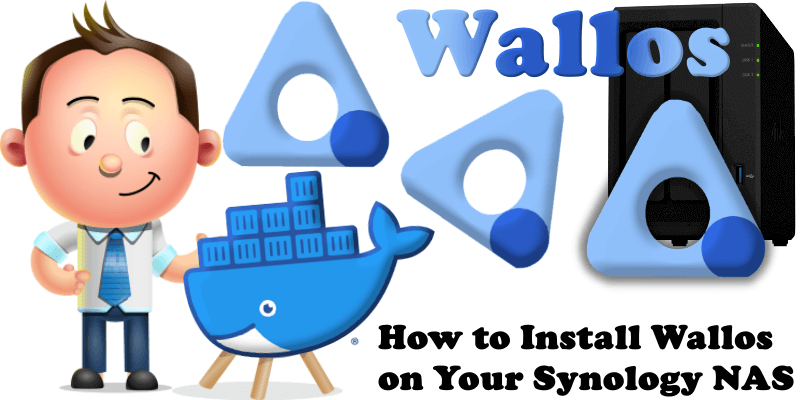
Wallos is a powerful, open-source and self-hostable web application designed to empower you in managing your finances with ease. Say goodbye to complicated spreadsheets and expensive financial software – Wallos simplifies the process of tracking expenses and helps you gain better control over your financial life. In this step by step guide I will show you how to install Wallos on your Synology NAS using Docker & Portainer.
This guide works perfectly with the latest Wallos v4.5.0 release.
STEP 1
Please Support My work by Making a Donation.
STEP 2
Install Portainer using my step by step guide. If you already have Portainer installed on your Synology NAS, skip this STEP. Attention: Make sure you have installed the latest Portainer version.
STEP 3
Go to File Station and open the docker folder. Inside the docker folder, create one new folder and name it wallos. Follow the instructions in the image below.
Note: Be careful to enter only lowercase, not uppercase letters.
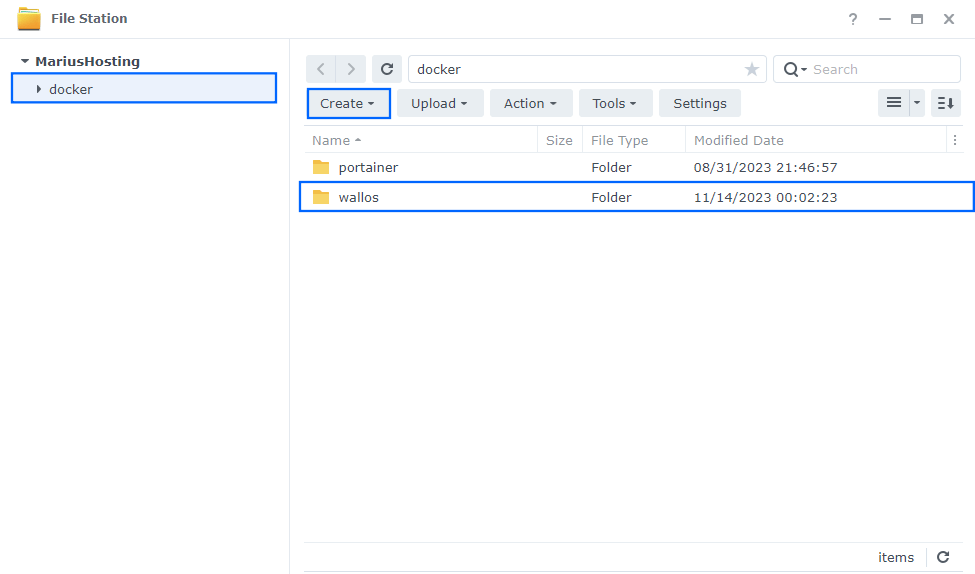
STEP 4
Now create two new folders inside the wallos folder that you have previously created at STEP 3 and name them db and images. Follow the instructions in the image below.
Note: Be to careful enter only lowercase, not uppercase letters.
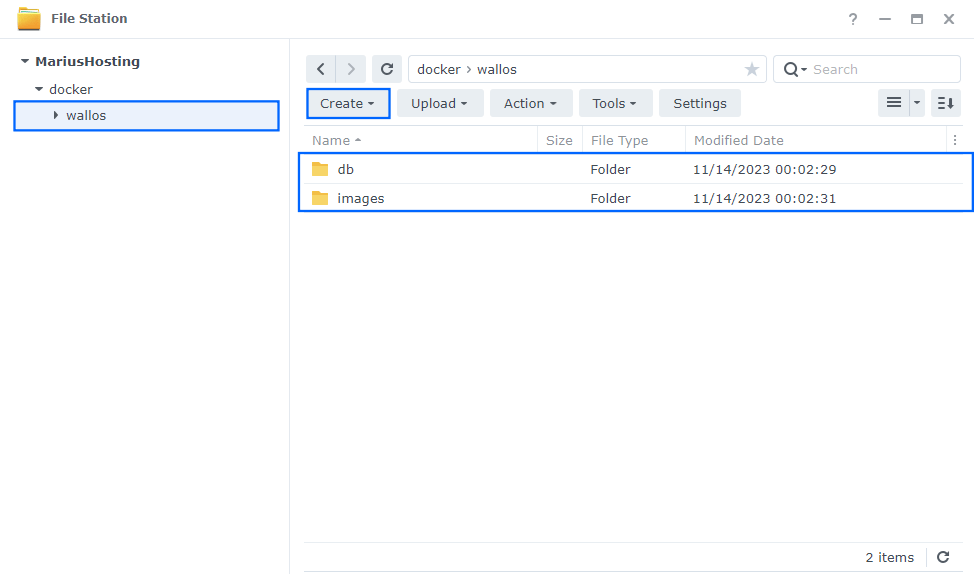
STEP 5
Log into Portainer using your username and password. On the left sidebar in Portainer, click on Home then Live connect. Follow the instructions in the image below.

On the left sidebar in Portainer, click on Stacks then + Add stack. Follow the instructions in the image below.

STEP 6
In the Name field type in wallos. Follow the instructions in the image below.
services:
wallos:
container_name: Wallos
image: bellamy/wallos:latest
healthcheck:
test: curl -f http://localhost:80/ || exit 1
mem_limit: 4g
cpu_shares: 768
security_opt:
- no-new-privileges:true
restart: on-failure:5
ports:
- 8353:80/tcp
volumes:
- /volume1/docker/wallos/images:/var/www/html/images/uploads/logos:rw
- /volume1/docker/wallos/db:/var/www/html/db:rw
environment:
TZ: Europe/Bucharest
Note: Before you paste the code above in the Web editor area below, change the value for TZ. (Select your current Time Zone from this list.)
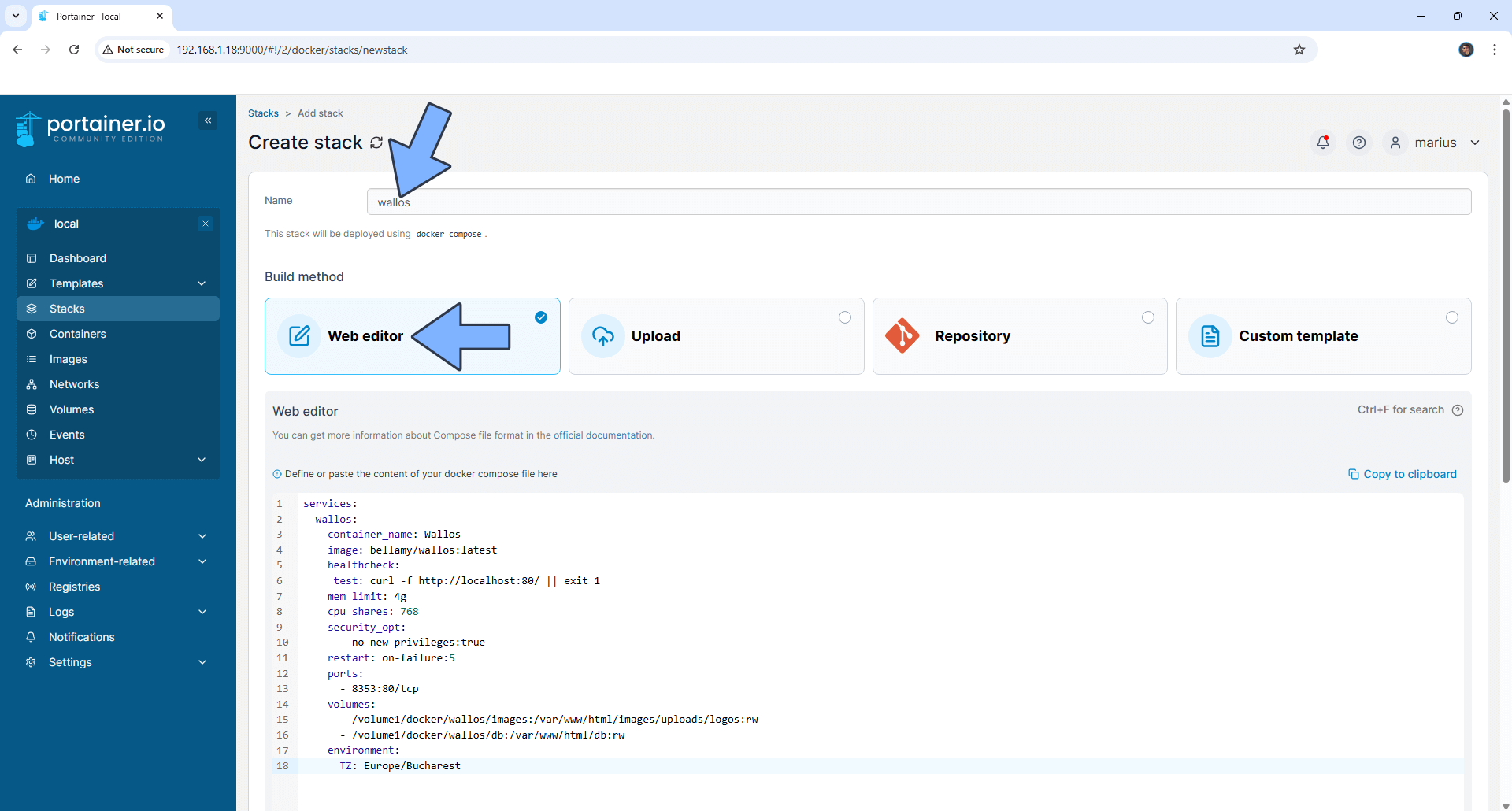
STEP 7
Scroll down on the page until you see a button named Deploy the stack. Click on it. Follow the instructions in the image below. The installation process can take up to a few minutes. It will depend on your Internet speed connection.
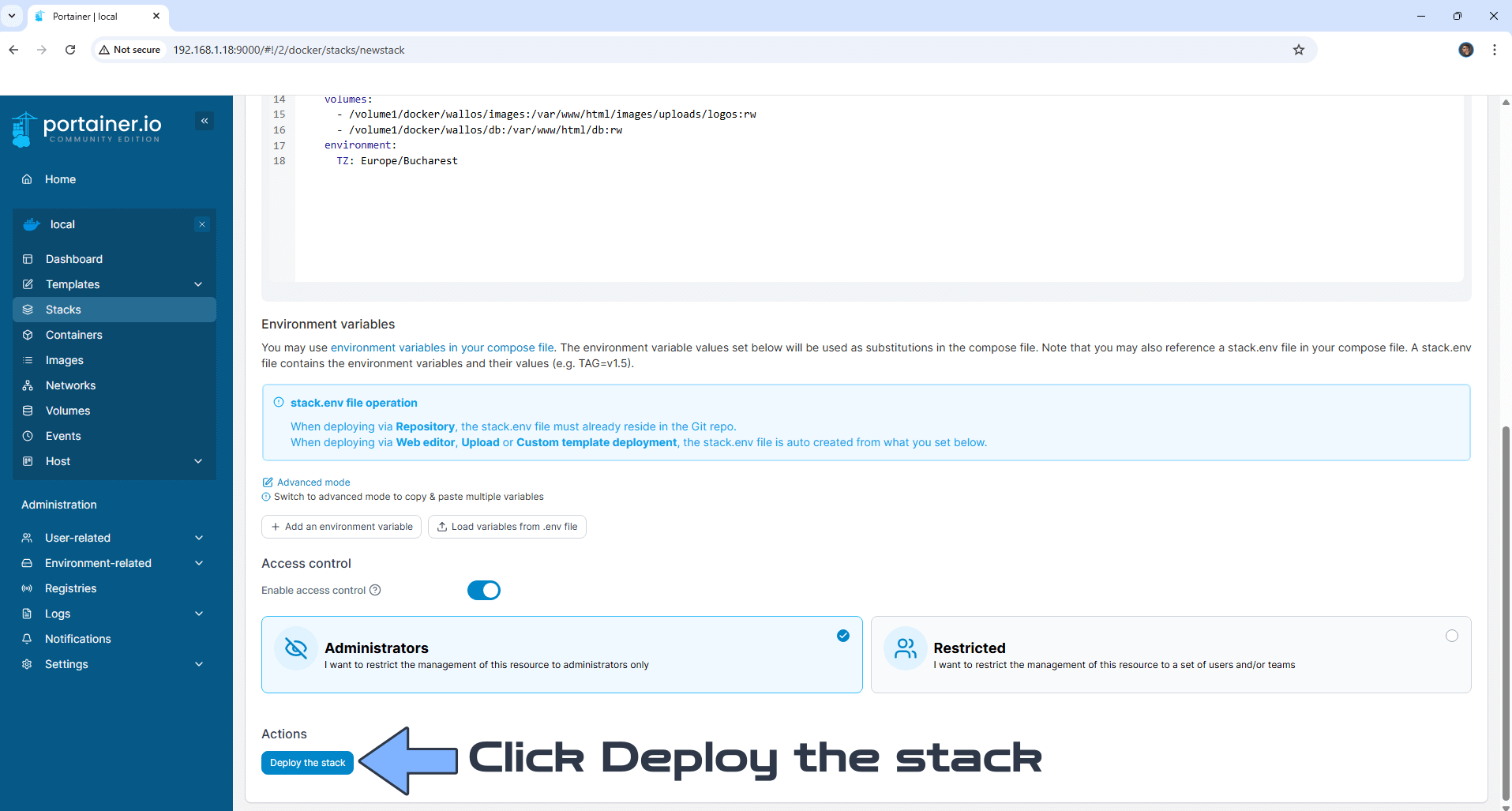
STEP 8
If everything goes right, you will see the following message at the top right of your screen: “Success Stack successfully deployed“.

STEP 9
🟢Please Support My work by Making a Donation. Almost 99,9% of the people that install something using my guides forget to support my work, or just ignore STEP 1. I’ve been very honest about this aspect of my work since the beginning: I don’t run any ADS, I don’t require subscriptions, paid or otherwise, I don’t collect IPs, emails, and I don’t have any referral links from Amazon or other merchants. I also don’t have any POP-UPs or COOKIES. I have repeatedly been told over the years how much I have contributed to the community. It’s something I love doing and have been honest about my passion since the beginning. But I also Need The Community to Support me Back to be able to continue doing this work.
STEP 10
The installation process can take up to a few seconds/minutes. It will depend on your Internet speed connection. Now open your browser and type in http://Synology-ip-address:8353 Type in your own Username, Email and Password then select your Main Currency and Language. Click Register. Follow the instructions in the image below.

STEP 11
Type in your own Username and Password that you have previously added at STEP 10, then click Login. Follow the instructions in the image below.
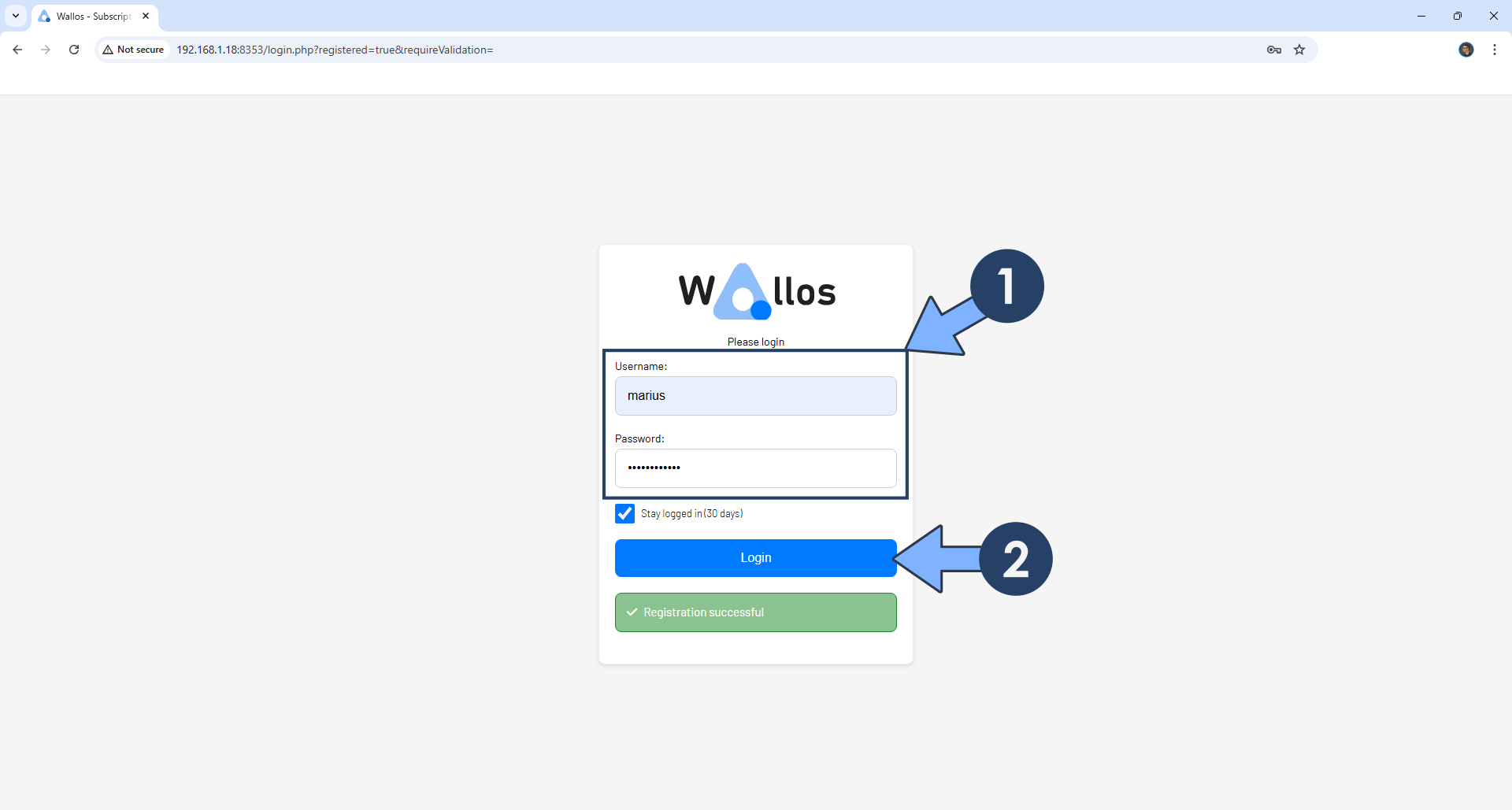
STEP 12
At the top right of the page, click on the user icon, then Settings to change your settings to meet your requirements. Click Add First Subscriptions to add your first subscription. Follow the instructions in the image below.

STEP 13
Add your first subscription, then save it. Follow the instructions in the image below.
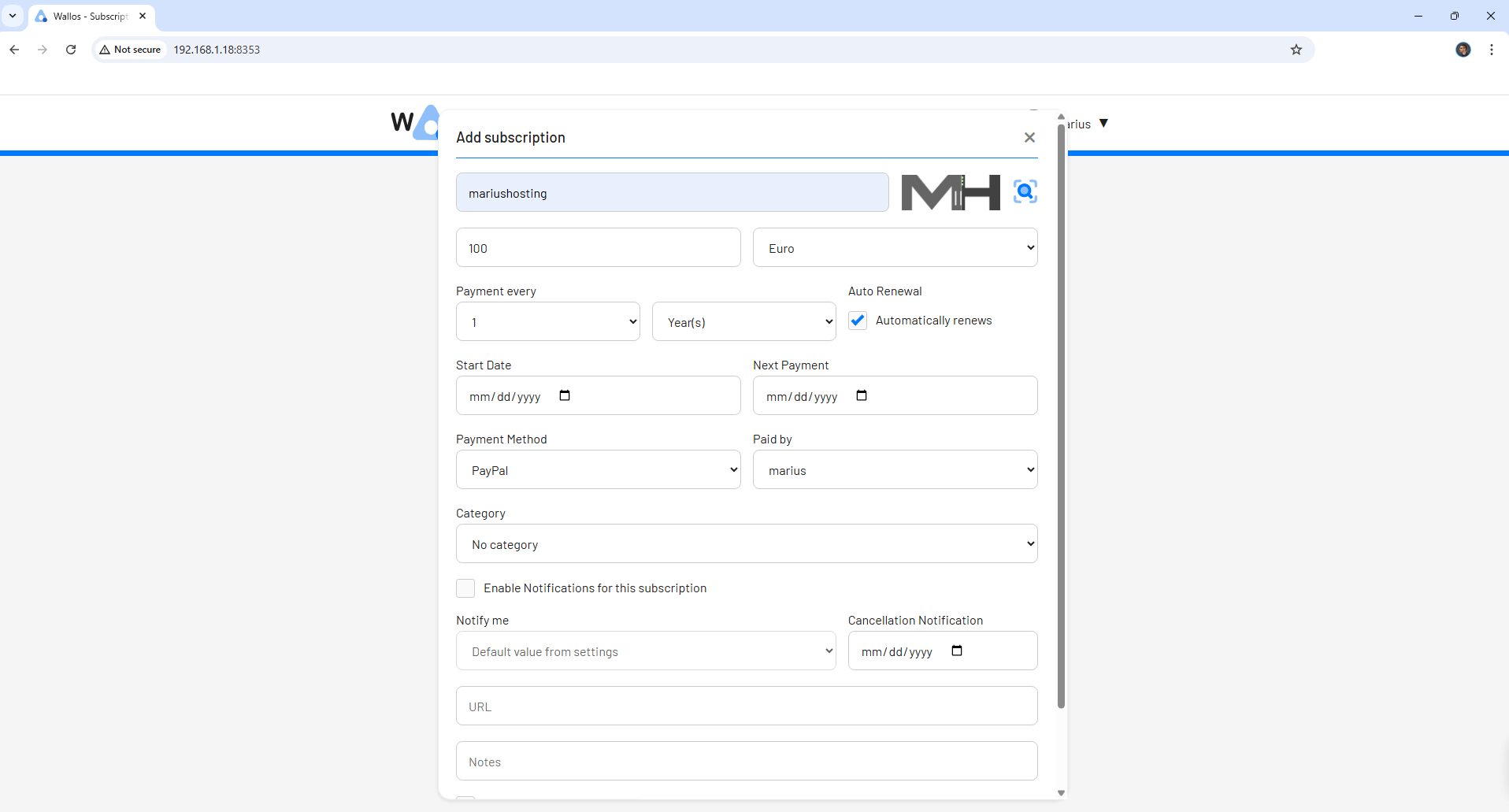
Enjoy Wallos!
If you encounter issues by using this container, make sure to check out the Common Docker issues article.
Note: If you want to run the Wallos container over HTTPS, check How to Run Docker Containers Over HTTPS. In order to make Wallos work via HTTPS, it’s mandatory to activate WebSocket.
Note: Can I run Docker on my Synology NAS? See the supported models.
Note: Find out how to update the Wallos container with the latest image.
Note: How to Free Disk Space on Your NAS if You Run Docker.
Note: How to Schedule Start & Stop For Docker Containers.
Note: How to Activate Email Notifications.
Note: How to Add Access Control Profile on Your NAS.
Note: How to Change Docker Containers Restart Policy.
Note: How to Use Docker Containers With VPN.
Note: Convert Docker Run Into Docker Compose.
Note: How to Clean Docker.
Note: How to Clean Docker Automatically.
Note: Best Practices When Using Docker and DDNS.
Note: Some Docker Containers Need WebSocket.
Note: Find out the Best NAS Models For Docker.
Note: Activate Gmail SMTP For Docker Containers.
This post was updated on Sunday / October 26th, 2025 at 1:24 AM
